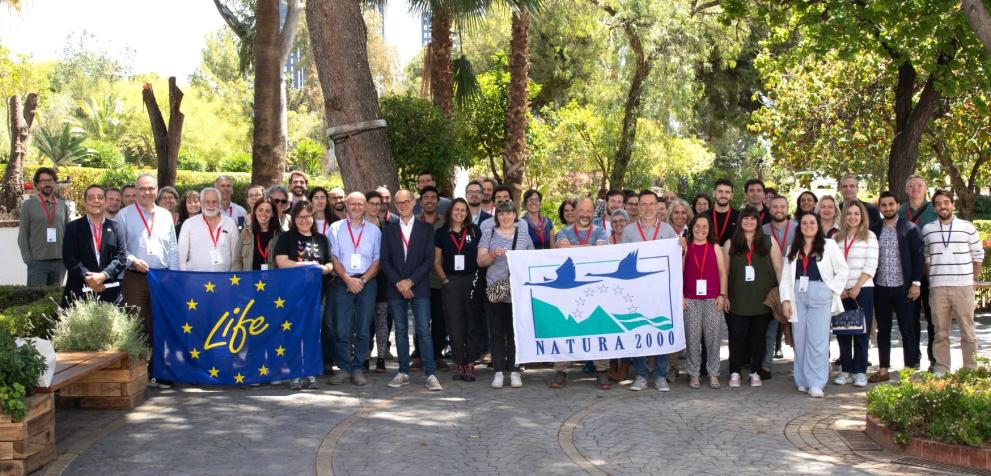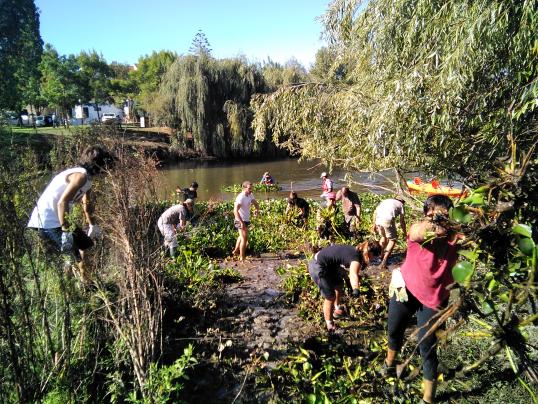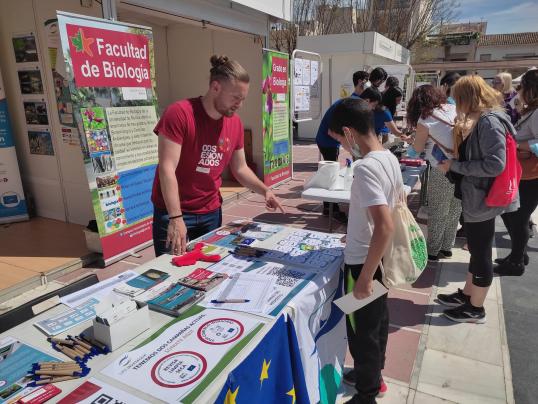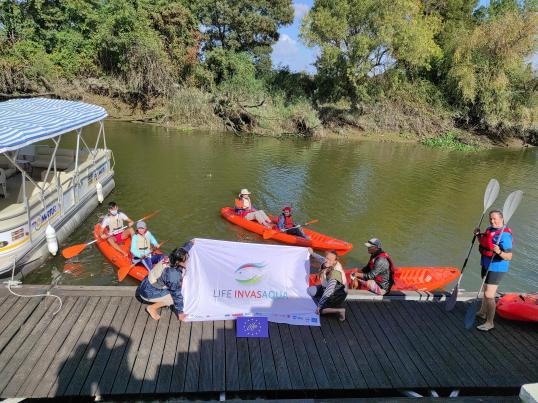
About the finalist
| Lead applicants | University of Murcia |
| Category | Cross-border cooperation |
| Countries involved | Portugal, Spain |
| Main Natura 2000 sites | 43 Natura 2000 sites in Spain and Portugal, including Mar Menor, Valongo and Baixo Miño |
| Website | https://lifeinvasaqua.com |
Overview
Aquatic invasive alien species (IAS) do not respect national boundaries and often out-compete native species, disrupt ecological balances, and degrade habitats. IAS can damage agriculture, fisheries, infrastructure and human health, costing billions of euros annually to control and mitigate their impacts.
Enhancing the control and management of aquatic IAS on the Iberian Peninsula – funded by the EU LIFE programme (INVASAQUA project) – involved nine partners from Spain and Portugal including a diverse consortium of universities, NGOs (such as the IUCN Centre for Mediterranean Cooperation which coordinate a larger network of IUCN governmental and non-governmental partners), and a media agency with a global reach (EFE) in its cross-border cooperation.
Joint activities included developing an innovative Early Warning and Rapid Response system (EWRR) for, and raising public awareness about, IAS. The project has established an online information platform (IBERMIS), linked to the Iberian Society of Ichthyology (SIBIC) database of IAS, in which audio and video materials, a traveling exhibition, posters on IAS plants and animals, the blacklist of currently established aquatic IAS, and an alert list of potential aquatic IAS have been uploaded.
The activities enhanced the Iberian capacity for EWRR among key stakeholder groups (including surveillance agents, river and estuary users (e.g. navigation, angling), educators and knowledge multipliers) through developing and agreeing upon codes of conduct on aquatic IAS with the targeted stakeholders. The European Association of Zoos and Aquaria (EAZA) recognised all project’s outputs and recommended them for use by their members.
The project also had a strong cross-border communication and awareness component, and promoted EU legislation on IAS through reports, articles, guides and codes. Among others, it achieved the organisation of 41 workshops, 80 training sessions, four MOOCs (massive open online courses), involving in total 2,882 participants, and educational initiatives reaching 9,300 students. It also published 384 news items, 18 press releases, 173 media pieces and 18 newsletters.
The jointly developed effective tools, including the online IBERMIS platform, a citizen science app, and tailored codes of conduct, contributed to an efficient cross-border EWRR system, thus enhancing the conservation status of freshwater and estuarine ecosystems in both countries. The tools are also broadly applicable to riverine and estuarine ecosystems across Europe.
Pictures from the finalists
Videos from the finalist:
https://www.youtube.com/watch?v=Z5ZXM_G7ymk
https://www.youtube.com/watch?v=4wMITaS29xo&list=PLnh4vKGsvl
Details
- Publication date
- 14 March 2024
- Author
- Directorate-General for Environment






